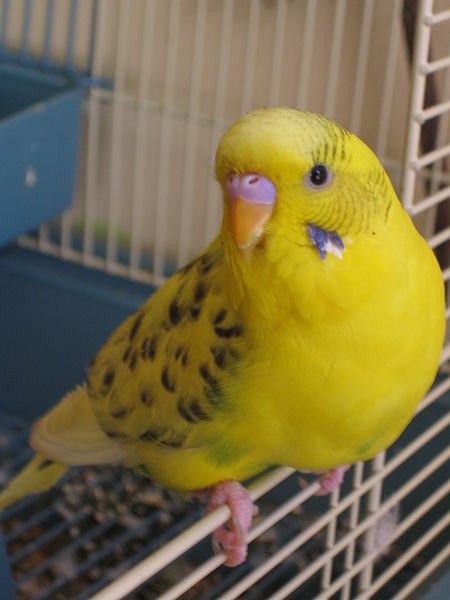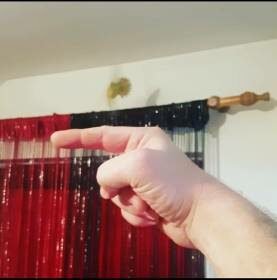Parakeets are available in a variety of color mutations, and many people choose parakeets based on the quality of their colors. Wild parakeets have yellow heads and green bodies. All other color mutations come from parakeets bred in captivity and have various attributes. Some parakeet colors are scarce, while others are common.
Sometimes it is hard for a beginner to identify the different colors and varieties present in the composition of our parakeets.
In this article, we will focus on three points:
- Basic colors
- Different varieties
- Sex connection
First, let me say that green is the original color of a parakeet, you cannot get blue split for the green, but you can get green split for blue. It is simply not possible to have birds carrying green, and green must be visible.
Green Parakeet
Green is considered the original color of a parakeet and is common in wild parakeets so that they can hide from predators in green leaves. Green parakeets have a yellow stripe with six spots on the sides of the neck, blue spots on the cheeks, black stripes with yellow edges, and a blue tail with black feathers.
Greens are available in three different colors, dark green, light green, and olive green. In each color variation, there is a darker shade than the previous one. In color, you will have genes that can reproduce as much as greens but can also reproduce blues.
Blue Parakeets
The blues are also available in three different colors, firstly, you get Skyblue, which as the name suggests, relates to the color of the sky, the dark blue is generally called Cobalt, and therefore the third darker blue call Mauve. As I said earlier, when blues are paired together, it cannot produce green. However, if you combine blue and green, you can reproduce blue and green.

Gray Green Parakeet
The gray greens are also available in three color variants, light gray, dark gray, and a very dark gray. However, with Gray Greens, there is an additional factor involved; Gray Greens are mutant reproduced from a Green and a Gray. There is an anomaly in the Gray Greens, and it is possible to breed gray greens with a double factor when this happens. It generally only produces gray greens.
Gray Parakeet
Grays are like blues, and there are three colors, light, dark, and a much darker gray. You can breed blue and gray from a pair of gray. However, like Gray Greens, they can also be a double factor, Gray.
Lutino and Albino Parakeet
Lutino and Albino are similar to green and blue, except for all birds with red eyes; they do not have colored pigments. They are yellow instead of green, white instead of blue and, of course, have red eyes instead of black.

The difference lies in their breeding characteristics. Red-eyed birds are called sex-linked in the sense that the females are always Lutino or Albino.
Parakeet Varieties
It doesn’t matter if you take Greens or Blues, there are several varieties. I will try to list them with their different characteristics. They are not listed in any order or alphabetically, just as it comes to mind, starting with:
Opalines
Opalines take the full body of Normals but differ in the markings of the wings. The Normals have black and yellow marks on the wings in the Greens and white and black in the Blues, the Opalines have black, but instead of yellow or white, they have a diluted body color. Also, at the back of their neck, they have a clear V, only the body color is displayed, no black marks.
Cinnamons
Cinnamons have half the color depth of the Normals. However, the wing marks are light cinnamon-brown than black, as in the normal colors. They are in all normal colors, including Gray Green and Gray.
Opaline Cinnamon
Opaline Cinnamon is a mixture of Opaline and Cinnamon, which is half the depth of the Normal body. However, the wings are similar to those of Opaline, but they have marks of Cinnamon, but have the body color instead of yellow or white and also have a clear V with body-color at the place of black markings.
Gray wings
Gray wings appear in all normal colors, Green, Blue, Gray Green, and Gray. They have a covered body color, and the wing marks are pastel gray on a yellow or white background, depending on whether they are yellow or white.
Clearwings
The yellow wings are the green series, and the white wings are blue series. They have a bright green or blue color. The wings should be yellow or white, depending on whether they are green or blue. Unfortunately, they no longer have Clearwings but tend to have immersed markings on the wings, some in low light and others in so much light that they look like Gray Wings. The best way to recognize them is to examine the spots on the cheeks; Clearwings always has bright purple spots, the gray wings have pale blue spots.
Dilutes
Yellow is the green version, and white is blue. You can get Gray Yellows and Gray Whites. They should not be mixed with Lutinos and Albinos, who have red eyes with white iris. The yellows and whites have black eyes with white iris, the body color of the yellow vary from faded yellow to apple green, and the whites change from lightly-immersed blue to darker blue, with slightly-immersed wings.
Recessive Pieds
Pied is a recessive mutation in which birds only have pigments in certain places. Pied birds can appear very attractive or very dirty or messy, depending on how organized they are.
Birds that are carrying the Pied gene but generally do not show that it still has traces of identification. The pied division may have one or two light-colored nails, a spot on the back of the head, or a slightly colored tail feather.
Dark-eyed Clears
Dark-eyed Clears, as their name suggests, are white in place of blue and yellow in place of green. They have black eyes without iris and are non-sex-related; they are similar to Recessive Pieds.
Fallows
Fallow is a variety, not a color. They cover the whole range of colors. The way to describe them is that they are lighter than normal body color and, instead of black marks on the wings, they have light brown marks. There are two varieties, namely the English Fallow, which has plum-colored eyes; they are not sex-related. The other is the German Fallow, which also has plum eyes, but has an iris and is sex-related.
Spangles
Another dominant variety is Spangles. In the green series, they have a bright green color, but the wing marks differ from the normal ones because the normal black and yellow marks are reversed in Spangle, they are yellow and black instead. The other specific feature of Spangle is that when two Spangles are combined, some youngsters are left without the normal Spangle marks. In the Greens case, all are yellow, including the wings, while the Blue series is white. The correct definition of this bird is a double factor.
Yellow faces
Yellow faces are a parakeet mutation that allows the yellow pigment in some places, but not in others. A yellow face can have a blue body (no yellow pigment) and a yellow back and head.
They only appear in the blue series. They can also be part of the green series, but it is challenging to identify them. In the blue series, they should have a yellow face instead of white, and the yellow should move from the head to the back of the neck, it is a major failure for the yellow to extend into the body shade.
Crested
The Crested is a variety and can be seen in all colors and varieties, including Spangles. They should have all the characteristics of normal colors but should have a crest or tuft on the top of the head. They are a non-related sex variety.
Normals
Today, there are very few birds that you could say are completely Normals. What we mean is the birds that are not carrying anything in their genes are not many. It is possible for a bird to carry, in a hidden way, the color, and the variety.
Sex-related
There are many varieties of parakeets that are sex-related, and what we mean by sex-related is the simple fact that when a variety is sex-related, only chicks can carry genes in a split or hidden way. The following list shows the sex-related varieties because they all have the same reproductive characteristics.
In the following list, I will present not only the reproductive characteristics of Opaline but also all other sex-related varieties:
- Opalines
- Cinnamon opaline
- Opaline gray wings
- Cinnamons
- Lacewings
- Lutino
- Albino
- German Fallows
- Non-related Sex Varieties
- The following list is the varieties that non-related sex:
- Gray wings
- Clearwings
- Yellows
- Whites
- Recessive Pieds
- Dark-eyed Clears
- English Fallows
- Crest
- Dilutes
- In this article, we have covered most birds and normal color varieties, of course, we have left out, such as Clearbodies and Saddlebacks, being reasonably new varieties.




